| Location: | Germany, UK |
| Client: | Myself |
| Start and end of planning dates: | November 2019 – November 2021 |
| Type of project: | David Holmgren’s domains: Culture and Education 12 categories: Education Personal development and the ‘inner transition’ |
| Design process: | SADIMET |
| Design goal: | To create an outline journey for my Applied Permaculture Design Diploma |
| Design Status: | Implemented |
Synopsis
My vision for this design is that I have a clear path that I can follow towards Diploma Accreditation.
For my design I have chosen SADIMET as my design framework, partly because it is the one I am most familiar with at the moment but also because I feel that it flows well for me, it matches my internal process. I will however allow myself to have intermittent pockets for ideas following Lobby McNamara’s design web and will document them as they come up through my design.
Idea for Design: Earth Cellar Dwelling
Survey
River of Life
“We are the sum total of our experiences. Those experiences – be they positive or negative – make us the person we are, at any given point in our lives. And, like a flowing river, those same experiences, and those yet to come, continue to influence and reshape the person we are, and the person we become. None of us are the same as we were yesterday, nor will be tomorrow.”
B.J. Neblett
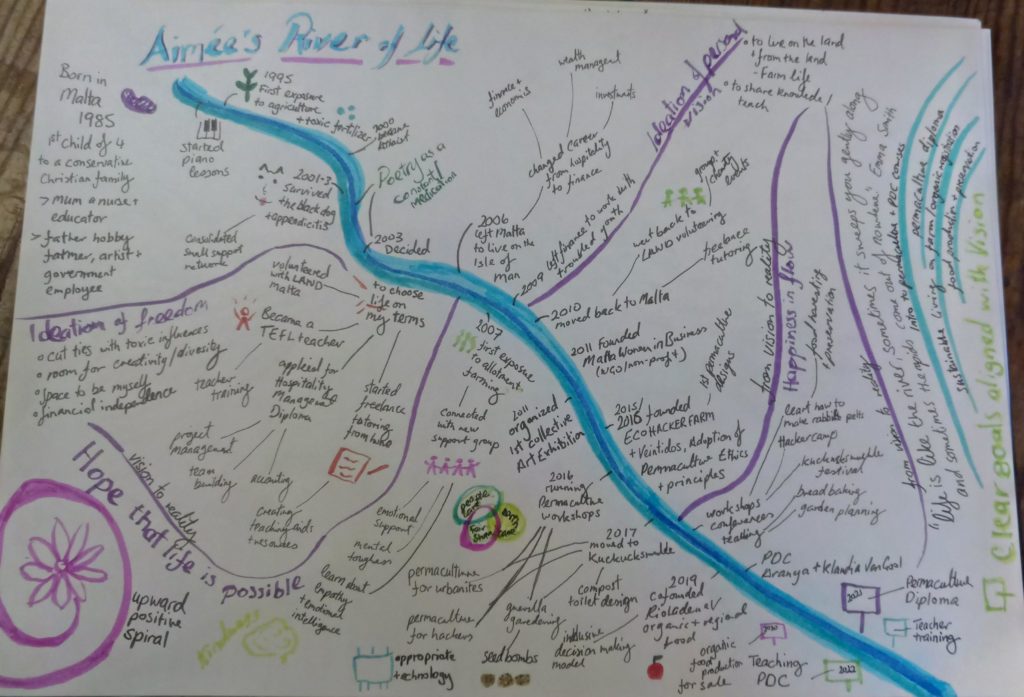
Attending the Permaculture Design Certificate course at High Heathercombe Center run by Aranya and Klaudia Van Gool in November 2019 filled me with hope and inspiration, I feel a lot of impetus to kickstart my diploma.
During the writing of my river of life, I have had a few ideas about a number of permaculture designs I could work on.
Idea for Design: The Eco Lodge income flow design
Idea for Design: The Kuckucksmuehle income focus on a 1-year internship opportunity
Idea for design: Creating an environment for learning/sharing/fun for volunteers at Kuckucksmuehle
Idea for design: Creating a mandala garden at fusion
Idea for design: Design the Mandala garden at Kuckucksmuehle with an educational focus
Idea for design: Diploma Student Focus Week Retreats
I recognize that I have a variety of design ideas, however not all will be incorporated into my diploma not because they are not worthwhile but because I want to take into account the limiting factors involved and also the choice to focus on improving my skills as a designer and teacher.
Goals
By the end of this design process I will have:
- Created my diploma calendar
- Shortlisted my idea list of designs for the diploma
- Organized my diploma projects
After the completion and implementation of this pathway I hope to have met these objectives:
- Expand my knowledge and practice of Permaculture
- Develop new skills and improve the skills I have
- Share permaculture with others in and outside of our community
Resources
After drawing my river of life, tree of life and doing the dream sketch I feel very blessed for my past experiences, the skills I learned along the way and the people in my life who make it worth living. I am rich in resources, networks and skills that will undoubtedly come in handy to achieve my goals.
Education Resources and reference material
- Permaculture Association UK – Guide for registered apprentices
Online support network
- Whatsapp group with PDC friends
- Facebook group: Diploma in Applied Permaculture Design
- Permaculture Association – Educators Monthly Online Gathering attendees: Graham Bell, Aranya, Kt Shepherd and others (added December 22, 2019)
Inspiration from
Face to face support
- My wonderful neighbor Regina who is also a PDC holder
- RioLaden eV – group members
- Kuckucksmuehle community members
- Attending events:
- Diploma Student Gatherings
- Permaculture Design courses, meetings and events with students
Technical skills – listed in my CV
Limiting Factors
I acknowledge that for some of the designs my skills will not come up to par and therefore provide an opportunity for upskilling or even introducing new skills.
My main limitation is expected to be time as I fit the design process around my other responsibilities however I also recognise that this limitation invites me to integrate my design process into everyday life, this will save time as I would be designing on the go for projects that I would be doing anyway. This will bring benefits of better insight into my decision making and grow my designer skills.
Initially, I was hesitant to pin this down however it is important to note that the community also has a lot of bearing of the designs that I work on, whilst this can be viewed as a limitation it is also notable that without their support this diploma journey would be a lot harder.
Applied Principles
David Holmgren beautifully explains permaculture principles providing a powerful tool to tie in my thoughts and design efforts and permaculture ethics. For this action learning pathway, I see several connections with the different principles as outlined below.
Observe and interact
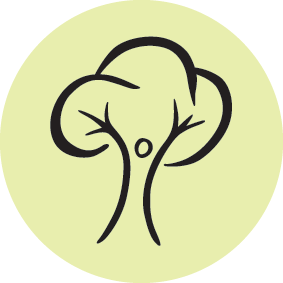
Living in a community and being a project manager on the same site my first observation is that my time is limited but it is mostly also flexible if I have enough volunteers and help. I also have a lot of support from the community and my permaculture network to feel confident about my journey. Whether or not I will be able to complete it in 2 years will have to be seen but I hope that this action learning plan will help to motivate me and keep me on track with my designs.
Catch and store energy
As I plan to integrate the design work with the ebbs and flows of the community project activities I expect to have a good store of energy to keep me going until my energies are required in the garden.
I also plan to have reflection phases whilst designing to allow myself some perspective. In general, up to this stage, I have noticed that this seems to happen naturally as I take personal space every few days to rest.

Obtain a yield
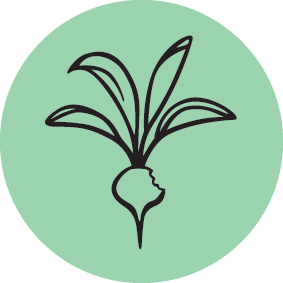
Whilst the main yield would be the diploma itself that will enable me to teach the PDC, I also plan to use the designs to run short courses on different permaculture topics, this would produce more than one yield, some money to finance the diploma and the support and also help me share and spread the knowledge with others.
Apply self-regulation and accept feedback
I expect that as most of my designs will be community-related, as I start working through the designs there will be instances where feedback will be given that needs to be addressed in terms of design choices and perhaps even design choices. I also acknowledge that this received feedback will influence the decision to proceed with the design chosen or simply to select a suitable alternative.

From patterns to details
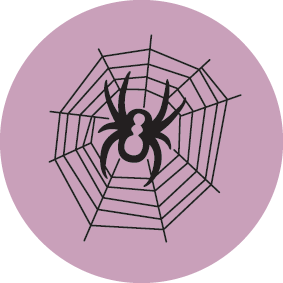
My creative juices have already produced some ideas which I am looking forward to shortlisting in the next section based on functions, time, skills and design complexity. The idea is to create a symbiosis between my goals, ethics, principles and individual designs within the context of my day to day life. Since most of the designs will be implemented the pattern in which the designs are chosen and documented will reflect these needs.
Integrate rather than segregate
Instead of scheduling strict timeslots to work on my designs, I plan on integrating them within my everyday life and only have a loose structure for general timekeeping of the overall portfolio building process. This will ultimately save time, provide multiple yields, continuous feedback and incremental progress towards achieving my diploma.
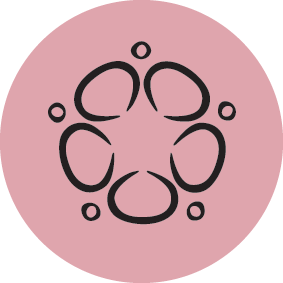
Use and value diversity

The diversity in the chosen different designs is important to grow different skills and also to identify areas for improvements and leave room for fun and excitement when it comes to going from one design to the next. I also want to attend gatherings with other students to look at my work from a fresh perspective.
Use edges and value the marginal
Since a lot of the activity here is seasonal I expect that the colder months will be when I am most active with the documentation phases of each design, this reflects what happens at the moment anyway, winter is for planning the next busy seasons. The edges in this case are very valuable nuggets of time that I can dedicate to planning my diploma work. My design work will be structured in such a way that I can pick it up and continue without having to spend too much time recapping.
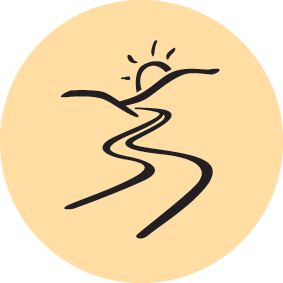
Creatively use and respond to change
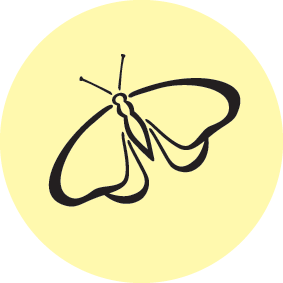
In the next 2 years, there will likely be a lot of changes in my life as I plan to become a mother, the Ecolodge to open as a retreat and short rental place and the farm to be registered for food production, teaching workshops and keeping the farm running. I acknowledge that it is impossible to plan each detail of these events in sufficient detail to prepare for all eventualities and that life has a way to throw off even the best-made plans. I endeavour to be flexible and not punish myself if along the way I need to pause or change course.
Analysis
Shortlisting Design Ideas
My main goals for the designs is that they should be:
- In line with my vision / dreams as outlined in my dreaming sketch and the river of life
- Share my knowledge
- Live on the land from the land
- Live in harmony with the earth and others
- Achievable within or only at the edge of my resources and limitations
- Real life applications and functions within my life in the next 1, 2 or 5 years
- Valuable to myself, the community I live in and / or the public at large
To arrive at a decision more easily I devised a table to help me compare my design ideas taking into account my main goals.
Abbreviations:
| Y = Yes | N = No | ? = Maybe |
| W = Want to learn | S = Short (2 months) | M = Medium (4 months) |
| L = (5 months plus) | B = Beyond 5 years | I = Me |
| C = Community | P = Public | x = chosen design |
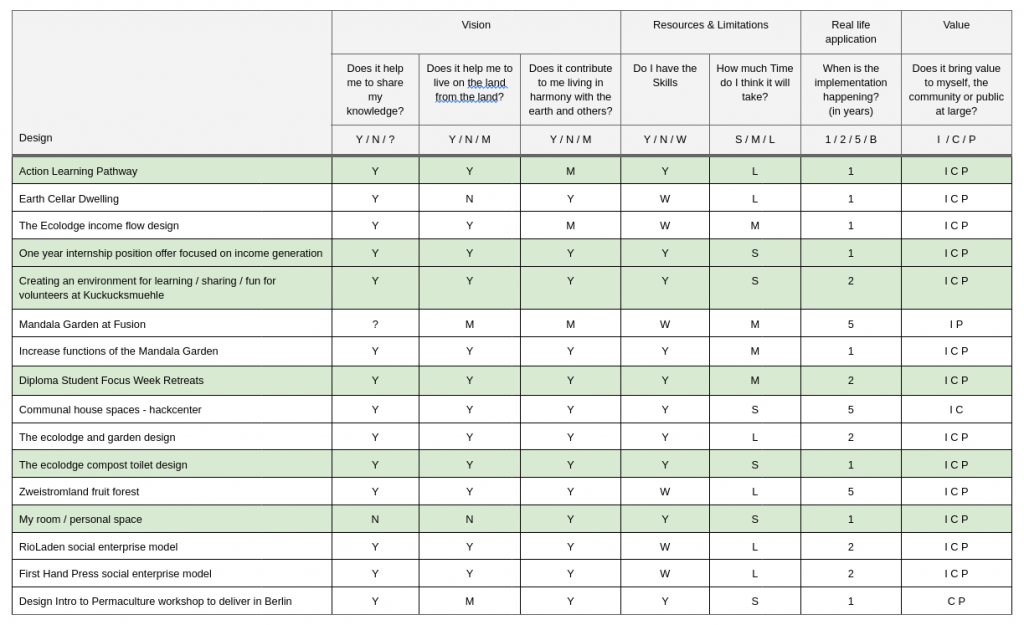
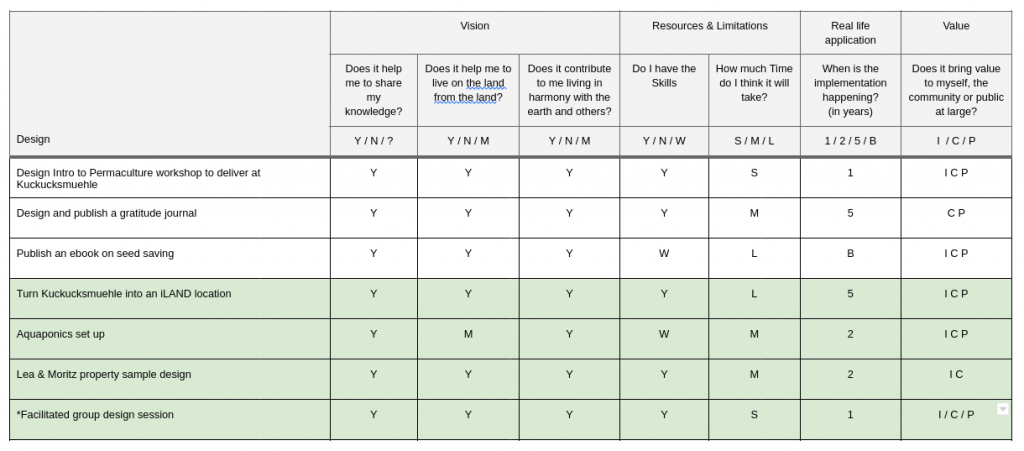
Whilst shortlisting the designs I allowed myself to not only look at how each fulfilled the criteria that I set in the beginning but also had room for how I feel about doing the actual design, each one evokes different tones in me. For example, the ones that are to be implemented in the first year fills me with trepidation, a kind of excitement with a little panic mixed in. I am hopeful that I have not bitten off more than I can chew and then I remind myself that I am at the analysis part of the design, that I can still change it if I need to once the evaluation stage comes and next to the tweaking. It feels somewhat reassuring that I can allow myself to be able to change my mind.
I also tried to pick a good mix of designs that I am comfortable with and excited about, that I know will be growing my design skills and others that will also grow technical skills, for example, the aquaponics setup. The clients for all the designs will vary and give a different flavour to the design process, like the compost toilet will take the ecolodge users into account who may have never seen or heard about a compost toilet before and others like my personal space allows room for me to think about my needs and self-care which I tend not to be very good at. I have also included a design that is not located on the site where I live, this will allow me to have an external client and design experience.
I was also careful not to pick designs that exceeded my self imposed implementation excess (beyond 5 years) this is to try and have designs that would produce a shorter feedback loop providing the opportunity for implementation, evaluation and tweaking as soon as possible further improve my design skills.
A web of connections
My initial idea was to create a web of connections that would include the designs and their relative connections, the ethics and the principles however at this point I do not have sufficient information to include the principles (apart from the one I have already done for this design) and therefore I chose not to include that into the mix. The designs themselves will have this included when I start working on them individually.
This produced an interesting graphic as you can see nearly all designs have connections to at least two ethics apart from this ALP, it could be argued that by becoming a diploma graduate I would be a better designer and therefore the earth benefits more from my designs and my sharing of knowledge, I did not want to be so presumptuous.
The colours are quite close to each other but you can follow the lines to match up the designs with the ethics and with each other.
Key:
People Care = Purple
Fair Share = Blue
Earth Care = Green
Connections between designs = Pink
This exercise helped me identify connections between the designs that were not necessarily immediately obvious to me and it also reassured me that my shortlisted choices are varied enough but still connected with the permaculture ethics and with each other.
It is important to also acknowledge how each design fits within the different domains of permaculture and the diploma system categories. For clarity this is represented below in this table:
| Design | Holmgren’s domain | Areas in Diploma System – categories | Main application | |
| 1 | Action Learning Pathway | Education & Culture | Education | Personal life & work Personal level |
| 2 | One year internship | Finances & economics, Education & Culture | Administration / Community Development / Education | Personal life & work Personal & Collective level |
| 3 | Creating an environment for learning/sharing for volunteers | Education & Culture | Education / Community Development | Personal life & work Personal & Collective level |
| 4 | *Facilitated Group design session | Education & Culture | Education / Community Development | Work Collective / global level |
| 5 | Diploma Student Focus Week retreats | Education & Culture | Education, Community development, Culture and Communication | Work Collective / global level |
| 6 | The ecolodge compost toilet design | Building, Land & nature stewardship | Architecture | Work Collective level |
| 7 | My room / personal space | Health, spirituality and well being | Site design | Personal level Personal life |
| 8 | Turn Kuckucksmuehle into an iLAND location | Education & Culture | Education / Administration / Community development | Work Collective level |
| 9 | Aquaponics set up | Tools and technology | Site design | Work Collective level |
| 10 | Lea & Moritz property sample design | Land & nature stewardship | Site design | Work Collective level |
* Added at Tweaking stage
Design & Implementation Plan
Timeline / Gantt Chart as of the 15th December 2019
Xx = Design in progress xx = Support event xx = Diploma Assessment
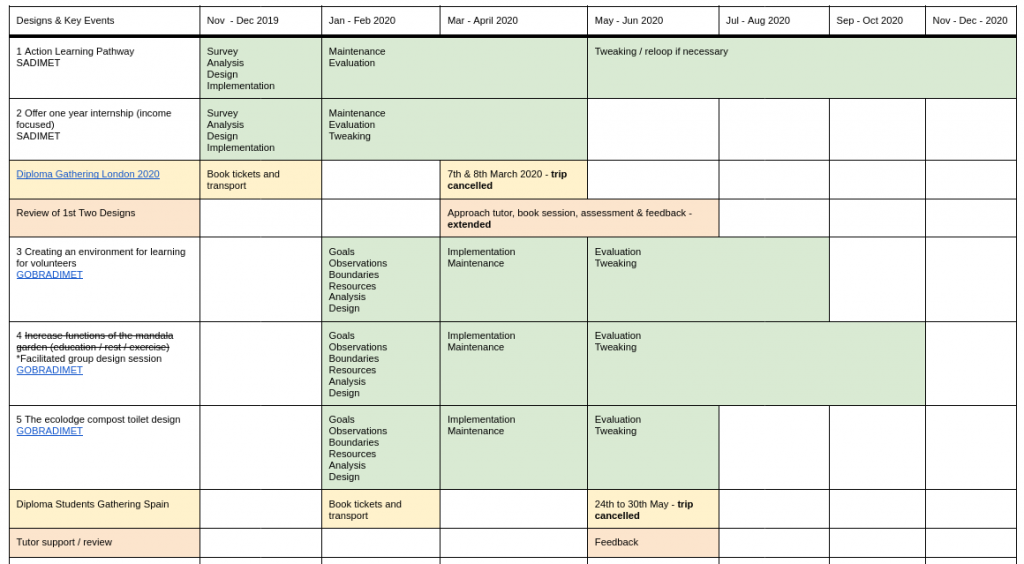
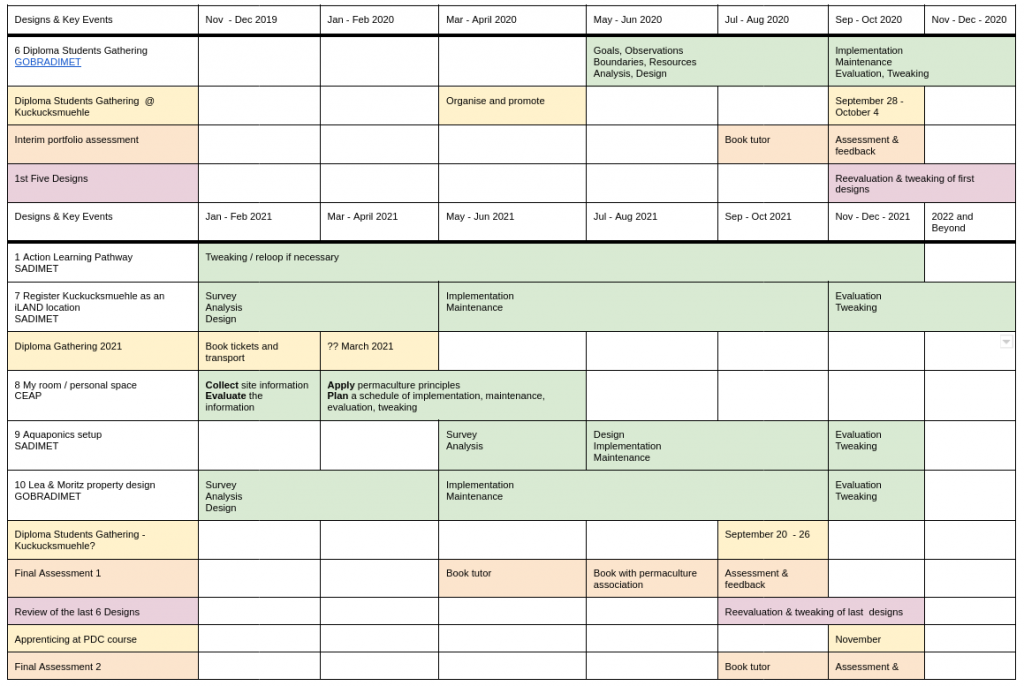
Maintenance
Maintenance of the design in particular the GANTT chart will be done on an ongoing basis keeping the design valid and accurate but flexible to deal with life’s lemons.
To aid this process, a printed version of the chart is now available on my desk as a tool to keep on track with the work to be done.
Reflection & Evaluation of the Design
Evaluation: Have I completed what I have set out to achieve?
My goal was that by the end of this design process I will have:
- Created my diploma calendar
- Shortlisted my idea list of designs for the diploma
- Organized my diploma projects
I have achieved all the goals I have set out to achieve and also got started on the goals set up for achievement on the way to my design work on the rest of the chosen designs.
How those goals have been met?
The goals were met by creatively finding out through the design process the tools that would be the best fit for me in that moment, when I started I didn’t have a clear idea as to what tools would come in handy, they kind of emerged from the needs identified along the way.
What do you notice?
I noticed that the GANTT chart anchored me in a way that I could progress the next steps even when I found myself delayed, it served as a step-by-step process which I could use as a point of return when I got distracted by other things in line.
Where there any aha moments regarding for example creating your diploma calendar?
The aha moment was not the calendar itself but how difficult it was actually to keep focused on it. I had some great aha moments when I presented some of my designs during guild meetings and when attending the diploma design group that Carla organised which made the design richer with other people’s input and feedback.
Expanding your knowledge and practice of permaculture. Is that happening? How?
With this design, I felt that my understanding of tool evaluation and testing had expanded along with the confidence to adopt a tool and adapt it to make it fit for purpose letting go of some dogmatic preconceptions which limit their application. I also took the opportunity to design some tools for myself from scratch. One aspect that was interesting was applying the principle which I had found challenging in previous designs during my PDC, this time I felt more comfortable including them without issue.
20th December 2021
As time has passed I have had to change my designs as I moved from Germany to Spain. Some of my designs were already finished and implemented before my move thankfully! I am very happy with the outcomes and therefore the tweaks are simply a swapping of designs that are in keeping with the original sentiments and purposes as the initial designs chosen, making the choices for the swaps easier and keeping the whole portfolio coherent.
It has been interesting for me to adapt my project management skills to my permaculture practice which produced a sort of hybrid that allowed me to both be structured and remain flexible enough to allow for personal growth. Whilst keeping a clear goal for me was never going to be a problem allowing myself to rest, not getting burnt out and still enjoying the process is something that I had to keep in mind and regularly remind myself of.
Reflections: Key learnings from the design process:
What did I learn?
I learned that It is critical to building resilient flexibility into a personal permaculture design such as this one, this is mainly because personal circumstances change often in unforeseeable ways even with careful consideration, in the aspect I like the permaculture principle of “creatively use and respond to change”. I found that building into my design an invitation for myself to maintain the design on an ongoing basis helped me to keep at it even if at a very slow pace at times.
What aspects of the design process, tools, ethics or principles worked for me on this occasion?
The shortlisting matrix that I used for shortlisting my designs also came in handy in subsequent designs and also in the maintenance of this design when it came to changing some of the initially chosen designs later on in the process because in the matrix were outlined the criteria which I had wanted to keep consistent: the timeframe, the domain etc.
I also noticed that I went heavily into the survey process with a river of life and a vision/dream board and that for subsequent designs I was able to use these as a springboard to jump straight into designing having already done the work.
I have also collected some of my reflections on the process here including some reflections on unexpected yields.
What aspects did not work for me?
How I documented the design, in the beginning, was using a different platform, when it came to moving the documentation I had to spend a lot of time formatting and this frustrated me especially since I felt I was done with the design itself.
I was also not so happy with the software I used to create the GANTT chart in future I will use a different tool that would help me to move the items more easily when I need to maintain the chart.
What would you do differently next time you use these processes, tools, ethics or principles?
I wouldn’t change the tools I found that my made-up tools worked well for what I was trying to achieve. I would change the way I do the documentation and incorporate more of what I liked about the process which is drawing and being creative. In future designs, I would like to use a diversity of principles and not just the David Holmgren set.
Tweaking
Tweaking for this design happens in tandem with maintenance and evaluation, because of the in detail criteria for which the design where chosen in order to replace a design another fulfilling the same criteria is sought, this keeps the overall portfolio design coherent and diverse and also makes tweaking easier than engaging the whole design process again and again when responding to change.
Appendix: Supporting documentation
Accreditation Criteria
| key ingredients | Aimee’s comments |
| Use of an intentional design process | SADIMET with some Looby’s design web |
| Consideration of all three ethics in every design and across the whole portfolio. | See Web of Connections section |
| Use of at least three of the permaculture principles in-depth (and a variety across the whole portfolio). | See Applied Permaculture Principles section |
| Use of at least three design tools (and a variety across the whole portfolio). | Journaling Vision / Dream board Shortlisting matrix River of life GANTT chart Web of connections |
| Identification of the client and aims to meet the needs of the client. | See sections Survey & Analysis |
| Use appropriate presentation methods to communicate your design work to the client. | GANTT chart presented in printed format, editable format and on this website with the whole write up. |
| Identification of a clear design brief which may include setting goals. | See section Analysis |
| Clear record of relevant observations or survey work. | See section Survey |
| Analysis of observational information and design options. | See section Analysis – shortlisting design matrix |
| Inclusion of your design decisions relevant to the situation including an implementation plan and maintenance plan. | See section Analysis – shortlisting design matrix, Design & Implementation section – GANTT chart |
| Evaluation of the design subject and content. | See section Reflection & Evaluation |
| Reflection of the design processes used. | See section Reflection & Evaluation |
| Summary of your lessons learnt and indicators of progression. | See section Reflection & Evaluation |
| Provision of supporting evidence | See Supporting Documentation section for links |
| Provision of acknowledgements | Included |
| Self-assessment | Done in this table, see section Reflection & Evaluation |
| Providing a summary of each design | See synopsis section |
| Addition of captions | Included with every picture |
| Highlighting keywords | Section and keywords highlighted with larger and/or bold text. |